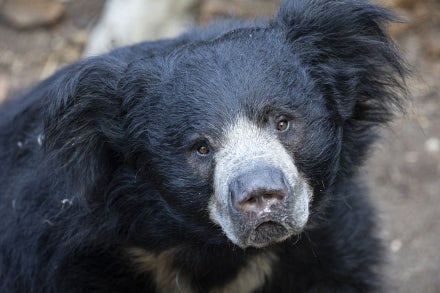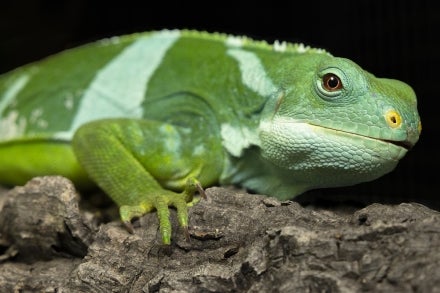Image

 Animals that sleep less than four hours are large herbivore land mammals like elephants, cows, and giraffes.
Animals that sleep less than four hours are large herbivore land mammals like elephants, cows, and giraffes.
 DROWSY DREAMER
DROWSY DREAMERGiraffe are short on REM sleep as they only take from 10 to 60 minutes of shut eye in a 24-hour period.[/caption] But what about other animals? How much do they sleep? Do they dream? Is hibernating the same as sleeping? Researchers studying sleep, called somnologists, have been delving into the secrets of snoozing and have uncovered fascinating information about varying patterns, habits, and postures across the Animal Kingdom. Sleep of some sort can be observed in all mammals and birds, as well as most reptiles, amphibians, fish, and even insects. Whether nocturnal, diurnal, or something in between, there is always a trade-off between being vulnerable to predators and needing some serious shut-eye.

Big Brains, Better Beds
 the number of hours a chimpanzee
sleeps in a
24-hour period.
the number of hours a chimpanzee
sleeps in a
24-hour period.
 NIGHTY-NIGHT
NIGHTY-NIGHTThis arboreal sportive lemur, a nocturnal primate species of Madagascar, is heading to bed in its cozy tree hollow. Safe and secure sleeping sites help animals get a good night’s (or day’s) sleep. (Photo by Chia Tan, SDZG)[/caption] So how do humans stack up compared to other primates? A new study suggests that humans have evolved to sleep less, but also to sleep very deeply. Shifting from the trees to the ground allowed early humans to sleep more intensely, a big benefit to a rapidly growing brain. While humans sleep a few hours less than other great apes, we spend about 25 percent of that time in the rich REM state, as compared to other primates that get only 5 to 10 percent REM sleep. While many mysteries still shroud the far-reaching benefits of REM sleep, it’s clear that great apes know how to make the most of the night.

Platypus Dreams
 the number of hours a dog sleeps in a
24-hour period.
the number of hours a dog sleeps in a
24-hour period.
 BEAUTY SLEEP
BEAUTY SLEEPGiant pandas get about 10 hours of sleep per day, a restful way to digest its low-calorie diet of bamboo.[/caption]
 number of hours a cat sleeps in a
24-hour period.
number of hours a cat sleeps in a
24-hour period.

Slumber Number
Animals employ a wide variety of postures for slumber: from the curled-up pose of cats, foxes, red pandas, and many others; to the leisure straddling of a branch by leopards; to the flank-to-flank, tails intertwined lineup of some monkeys; to the bat’s toe hang; to the flamingo’s one-leg balancing act. There are dozens of ways to doze! [caption id="attachment_120377" align="aligncenter" width="683"] BALANCING ACT
BALANCING ACTFlamingos tuck one leg up while sleeping, which reduces the loss of body heat.[/caption]
 the number of hours an elephant
sleeps in a
24-hour period.
the number of hours an elephant
sleeps in a
24-hour period.

Hibernation Nation
 the number of hours a little brown bat sleeps in a
24-hour period.
the number of hours a little brown bat sleeps in a
24-hour period.
 EAGER ESTIVATOR
EAGER ESTIVATORThe desert tortoise lives in raging hot desert environments, so it reclines in a shady, cool den during the hottest times. This helps the animal conserve energy and retain water in the body.[/caption]
 the number of hours a python sleeps in a
24-hour period.
the number of hours a python sleeps in a
24-hour period.




